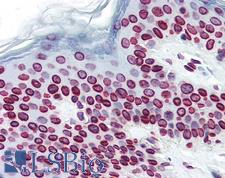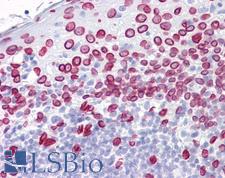Login
Registration enables users to use special features of this website, such as past
order histories, retained contact details for faster checkout, review submissions, and special promotions.
order histories, retained contact details for faster checkout, review submissions, and special promotions.
Forgot password?
Registration enables users to use special features of this website, such as past
order histories, retained contact details for faster checkout, review submissions, and special promotions.
order histories, retained contact details for faster checkout, review submissions, and special promotions.
Quick Order
Products
Antibodies
ELISA and Assay Kits
Research Areas
Infectious Disease
Resources
Purchasing
Reference Material
Contact Us
Location
Corporate Headquarters
Vector Laboratories, Inc.
6737 Mowry Ave
Newark, CA 94560
United States
Telephone Numbers
Customer Service: (800) 227-6666 / (650) 697-3600
Contact Us
Additional Contact Details
Login
Registration enables users to use special features of this website, such as past
order histories, retained contact details for faster checkout, review submissions, and special promotions.
order histories, retained contact details for faster checkout, review submissions, and special promotions.
Forgot password?
Registration enables users to use special features of this website, such as past
order histories, retained contact details for faster checkout, review submissions, and special promotions.
order histories, retained contact details for faster checkout, review submissions, and special promotions.
Quick Order
PathPlusTM LMNA / Lamin A+C Antibodies
Lamin A (LMNA, Lamin A/C) and Lamin B are the two types of lamins found in vertebrates. These proteins make up the matrix of the nuclear lamina that lines the inner nuclear membrane. Lamin A is functionally involved in gene expression, nuclear stability, the maintenance of neural circuit function and nervous system integrity, and chromatin structure. A number of diseases are caused by Lamin A mutations, including Emery-Dreifuss muscular dystrophy, familial partial lipodystrophy, limb girdle muscular dystrophy, dilated cardiomyopathy, Charcot-Marie-Tooth disease, and Hutchinson-Gilford progeria syndrome. Wild-type Lamin A has also been found to be overexpressed in the hippocampus in the later stages of Alzheimer’s disease. In immunohistochemistry, Lamin A has high nuclear membrane positivity in all cell types throughout the body.
References: Nat. Rev. Genet. 2006. 7 (12): 940–52, PMID: 17139325; Int J Mol Sci. 2019 Feb; 20(4): 878, PMID: 30781626; Cell Stress. 2018 Sep; 2(9): 219–224, PMID: 31223139
3 PathPlusTM Antibodies



☰ Filters
Products
Antibodies
(3)
Type
Primary
(3)
Target
LMNA / Lamin A+C
(3)
Reactivity
Human
(3)
Mouse
(2)
Rat
(1)
Bovine
(1)
Dog
(1)
Application
IHC
(3)
IHC-Fr
(1)
IHC-P
(3)
WB
(3)
Flo
(2)
ICC
(1)
IF
(1)
IP
(1)
Host
rabbit
(1)
mouse
(2)
Product Group
PathPlus Neuro
(3)
Isotype
IgG
(1)
IgG1
(1)
IgG3
(1)
Clonality
monoclonal mc
(2)
polyclonal pc
(1)
Clone
133A2
(1)
JOL2
(1)
Format
Unconjugated
(3)
Epitope
C-Terminus
(1)
aa464-572
(1)
Publications
No
(2)
Yes
(1)

Neuroscience
LMNA / Lamin A+C Rabbit anti-Mouse Polyclonal (C-Terminus) Antibody
Mouse, Human
IF, IHC, IHC-P, WB
Unconjugated
50 µl/$375

Neuroscience
LMNA / Lamin A+C Mouse anti-Human Monoclonal (aa464-572) (JOL2) Antibody
Human
Flo, IHC, IHC-P, IP, WB
Unconjugated
0.05 ml/$375

Neuroscience
LMNA / Lamin A+C Mouse anti-Human Monoclonal (133A2) Antibody
Mouse, Dog, Bovine, Rat, Human
Flo, ICC, IHC, IHC-Fr, IHC-P, WB
Unconjugated
50 µg/$375
Viewing 1-3
of 3
product results











